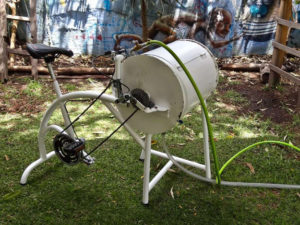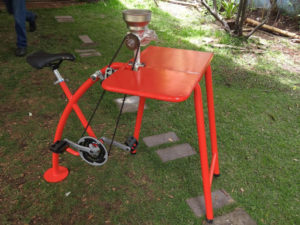The problem with such tall heights was the instability. Thus, it was used for sport rather than as usual way of transport. Manufacturers homogenised the bicycles by standardising the front wheel to the 1.2 m diameter and the rear wheel to 40 cm.
The word bicycle was common in the UK in 1880. The French translated it as bicyclette. The use of rubber tyres instead of wood was introduced by John Boyd Dunlop in 1888 making the rides more comfortable. At the same years, the French brothers Michelin created a removable tyre and so did the Italian Battista Pirelli.
The bicycles weighted between 18 and 20 kg in these years. The brake pads appeared in 1893. The invention which allowed to think the bicycle as a mass vehicle was the chain transmission between chainring and sprocket. This new incorporation was developed by the French Guilment and the British Harry John Lawson in 1879 although its production took place in 1884. In the same era the bicycle with chain transmission and equal wheels appeared thanks to John Kemp Starley. This bike was commonly known as Rover Safety Bicycle. This was the precursor model of the modern bicycle.
The bikes we enjoy nowadays are evolved from the 1885 Rover bicycle. Starley should be considered the father of the modern bikes production as he started it in his company The Rover Company, co-founded with William Sutton, in 1877. They banged them out and it was well accepted in every country. In the XX century, only small improvements have been made to the bicycle such as the gear change or the use of lighter and more resistant materials.


